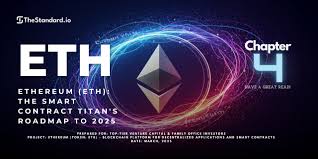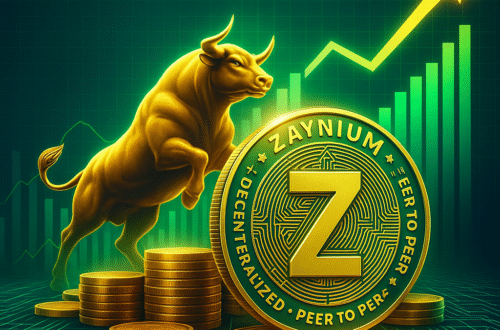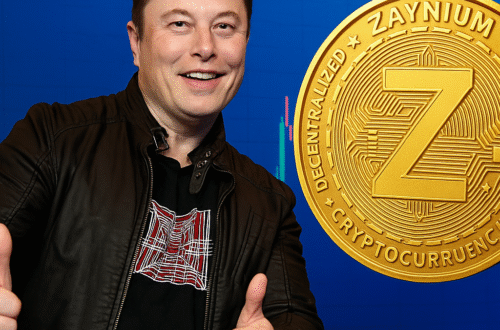Introduction
Ethereum (ETH) is one of the most influential cryptocurrencies in the world, second only to Bitcoin in market capitalization. Unlike Bitcoin, which primarily serves as digital gold, Ethereum is a decentralized platform that enables smart contracts and decentralized applications (DApps).
With the ETH 2.0 upgrade, Ethereum is addressing its biggest challenges—scalability, high gas fees, and energy efficiency—making it more powerful and in demand than ever before.
In this article, we’ll explore:
- What Ethereum is and how it works
- The role of smart contracts
- The transition from ETH 1.0 to ETH 2.0
- How ETH 2.0 improves scalability and security
- The growing demand for Ethereum in DeFi, NFTs, and more
- The future of Ethereum and its potential challenges
What is Ethereum (ETH)?
Ethereum is a blockchain-based platform that allows developers to build and deploy decentralized applications (DApps). Launched in 2015 by Vitalik Buterin, Ethereum introduced smart contracts, which are self-executing agreements with predefined rules.
Key Features of Ethereum
- Smart Contracts – Automate transactions without intermediaries.
- Decentralized Applications (DApps) – Powering DeFi, NFTs, and more.
- Ether (ETH) – The native cryptocurrency used for transactions.
- Decentralized Finance (DeFi) – Enables lending, borrowing, and trading without banks.
- Non-Fungible Tokens (NFTs) – Unique digital assets like art, music, and collectibles.
How Do Smart Contracts Work?
Smart contracts are the backbone of Ethereum. They are self-executing programs that run when specific conditions are met.
Examples of Smart Contract Use Cases
- DeFi Platforms (Uniswap, Aave) – Enable peer-to-peer lending and trading.
- NFT Marketplaces (OpenSea) – Facilitate buying/selling digital art.
- Supply Chain Management – Track goods transparently.
- Voting Systems – Ensure tamper-proof elections.
Because smart contracts run on blockchain, they are secure, transparent, and trustless (no need for middlemen).
The Scalability Problem in Ethereum 1.0
Despite its success, Ethereum faced major challenges:
- High Gas Fees – Network congestion increased transaction costs.
- Slow Transactions – Only 15-30 transactions per second (TPS).
- Energy-Intensive Mining – Proof-of-Work (PoW) consumed excessive electricity.
This led to the development of Ethereum 2.0 (ETH 2.0), a major upgrade to solve these issues.
ETH 2.0: The Future of Ethereum
ETH 2.0, also called the “Consensus Layer,” is a series of upgrades to make Ethereum faster, cheaper, and more sustainable.
Key Improvements in ETH 2.0
- Transition to Proof-of-Stake (PoS)
- Replaces energy-heavy mining with staking.
- Users lock ETH to validate transactions, earning rewards.
- Reduces energy consumption by ~99.95%.
- Sharding – Boosting Scalability
- Splits the network into 64 smaller chains (shards).
- Increases transaction speed to 100,000 TPS (eventually).
- The Beacon Chain
- Introduced in 2020, it coordinates validators in PoS.
- The Merge (Completed in 2022)
- Merged Ethereum’s original chain (PoW) with the Beacon Chain (PoS).
- Future Upgrades (Danksharding, Proto-Danksharding)
- Further improve scalability and reduce fees.
How ETH 2.0 Increases Demand for Ethereum
With these upgrades, Ethereum is becoming more attractive for:
1. Decentralized Finance (DeFi)
- Over $50 billion locked in DeFi protocols (mostly on Ethereum).
- ETH 2.0 lowers fees, making DeFi more accessible.
2. NFTs and Digital Ownership
- Ethereum dominates the NFT market (OpenSea, Bored Ape Yacht Club).
- Faster transactions = more NFT adoption.
3. Enterprise Adoption
- Companies like Microsoft, JPMorgan, and Visa use Ethereum for blockchain solutions.
4. Staking Rewards
- Users earn 4-6% APY by staking ETH.
- Over 25 million ETH already staked (~$50 billion).
Challenges Facing Ethereum
Despite its strengths, Ethereum still faces:
- Competition from Solana, Cardano, and Polkadot (faster & cheaper chains).
- Regulatory Uncertainty – Governments may impose strict rules.
- Adoption Hurdles – Still complex for average users.
However, Ethereum’s first-mover advantage, strong developer community, and continuous upgrades keep it ahead.
Conclusion: Ethereum’s Bright Future
Ethereum remains the leading smart contract platform, and ETH 2.0 is making it faster, greener, and more scalable. With growing demand in DeFi, NFTs, and enterprise solutions, Ethereum is poised to remain a blockchain giant.
Investors, developers, and users alike are watching closely as Ethereum evolves—will it maintain its dominance? The signs look promising.
FAQs About Ethereum (ETH)
Q: Is Ethereum better than Bitcoin?
A: Bitcoin is digital gold (store of value), while Ethereum is a platform for DApps and smart contracts.
Q: How can I stake ETH?
A: Use platforms like Lido, Coinbase, or Binance to stake ETH and earn rewards.
Q: Will ETH 2.0 reduce gas fees?
A: Yes, sharding and other upgrades will significantly lower fees over time.
Q: What is the future price prediction for ETH?
A: Many analysts predict ETH could reach $10,000+ in the next bull run due to increased utility.





